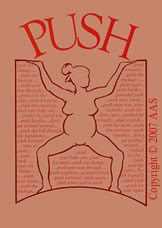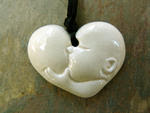In the following article reporting on safety issues in US hospitals, this jumps out at me: Ten of 16 types of patient-safety incidents increased over the three years of the study, by an average of almost 12 percent. The greatest increases were in post-operative sepsis (about 34.3 percent); post-operative respiratory failure (18.7 percent); and selected infections due to medical care (about 12.2 percent). All of these are the risks associated with cesarean delivery. Obstetrics are taught and like to perpetuate the myth that obstetric medicine is responsible for the lowered mortality numbers since the fifties. Fact is, it is still antibiotics that saves women in obstetric, surgical birth. We could not have the high cesarean rate AND the current maternal mortality rate without antibiotics. Anyone have a study that shows how many women who gave birth surgically were NOT on antibiotics? ZERO. How many women had to be on extended or repeated rounds of antibiotics in first weeks and months of post partum care? Now, that would be interesting to know. How many maternal deaths from infection would there be without antibiotics?
Antibiotics, nutrition, and sanitation are the number one reasons given for decreased maternal and neonatal mortality around the world and since the thirties. Hospital acquired infections continue to be a significant killer of hospital patients. A woman does not have to give birth surgically to be at risk. In my college microbiology class I recall an emphasis on "every time you puncture the skin, you increase the risk of infection in the hospital." IV's, epidural catheter, blood draws in the most infectious places on the planet are the entry point for germs. Keeping your skin intact is the best prevention.
Also in article below, During those three years, there were 247,662 potentially preventable deaths in U.S. hospitals. Medicare patients involved in one or more safety incidents had a 25 percent chance of dying.
In the US African-American and Latino/Hispanic women are more likely to die in childbirth. Higher numbers of both of these groups are also Medicare recipients. These women are also more likely to be restricted to teaching hospitals because the government funds residency programs and they must serve medicare patients. I was told that a midwest hospital with ten FP residents per class received $100,000 per resident per year (wooo, talk 'bout your "welfare mamas"). Women on medicaid have the least power of all women and the least choice. Obstetric residents are learning how to care for high risk pregnancies by learning on all women and by creating the need for surgical birth by practicing induction and anesthesia, particularly women on medicare. Round and round we go. Which came first? The obstetrician or the high risk pregnancy?
There is so much that the US could be doing to prevent maternal and newborn loss. CONSUMER CONFRONTATION of the vagaries of the medical and hospital system is where it will start.
In the article below the study found a significant discrepancy between hospitals. THAT is disgusting. This is SCIENTIFIC EVIDENCE that shows the need for a US STANDARD OF CARE in obstetric medicine and the need for an INDEPENDENT agent to oversee obstetrics (rather than the fox -- fed by Big Pharm -- guarding the hen house.) I will say it again (and again, and again) that the US needs to look at the lack of consistency of obstetric medicine (supposedly based in science) from state-to-state, from hospital-to-hospital, from doctor-to-doctor, and from nurse-to-nurse. Giving birth in the hospital in the US is one round after another of "Russian roulette" - with cesarean birth being the "bullet".
The article:
MONDAY, April 2 (HealthDay News) -- Patient safety incidents in U.S. hospitals increased by three percent overall from 2003 to 2005, and the error gap between the nation's best- and worst-performing hospitals remained wide, a report released Monday found.
America's top rated centers had 40 percent lower rates of medical errors than the poorest-performing hospitals, the study showed.
The fourth annual HealthGrades Patient Safety in American Hospitals Study, put out by HealthGrades, an independent health care ratings company, examined over 40 million Medicare hospitalization records at almost 5,000 hospitals from 2003 to 2005.
The study found that:
- There were 1.16 million patient safety incidents among Medicare patients during the three years of the study. That works out to an incidence rate of 2.86 percent.
- During those three years, there were 247,662 potentially preventable deaths in U.S. hospitals.
- Medicare patients involved in one or more safety incidents had a 25 percent chance of dying.
- The excess cost to Medicare associated with patient safety incidents was $8.6 billion from 2003 to 2005.
- Ten of 16 types of patient-safety incidents increased over the three years of the study, by an average of almost 12 percent. The greatest increases were in post-operative sepsis (about 34.3 percent); post-operative respiratory failure (18.7 percent); and selected infections due to medical care (about 12.2 percent).
- Incidents with the highest occurrence rates were decubitus ulcer; failure to rescue; and post-operative respiratory failure.
- If all hospitals had performed at the same level as the top-rated hospitals, about 206,286 patient safety incidents and 34,393. Medicare patient deaths could have been avoided, resulting in $1.74 billion in savings.
"The cost of medical errors at American hospitals in both mortality and dollar terms continues to be significant, and the 'chasm in quality' between the nation's top and bottom hospitals, which HealthGrades has documented in this and other studies, remains," the study's primary author, Dr. Samantha Collier, HealthGrades' chief medical officer, said in a prepared statement.
"But the nation's best-performing hospitals are providing benchmarks for the hospital industry, exercising a vigilance that resulted in far fewer in-hospital incidents among the Medicare patients studied," Collier said.
Benchmarks? Is that on the path to a national STANDARD OF CARE that is consistent, uniform, SCIENCE-BASED, dependable, and ENFORCEABLE? I certainly pray so.








No comments:
Post a Comment